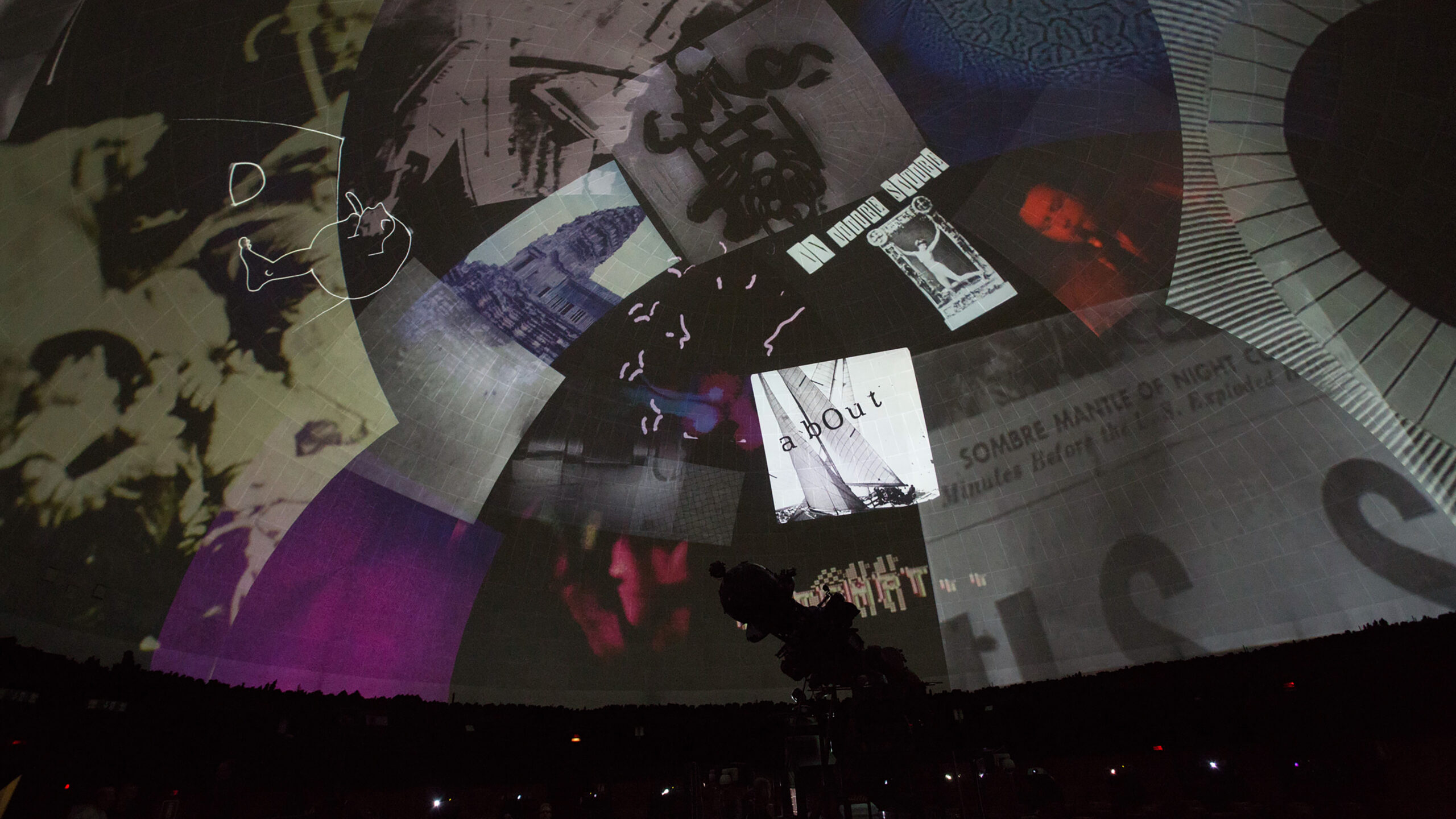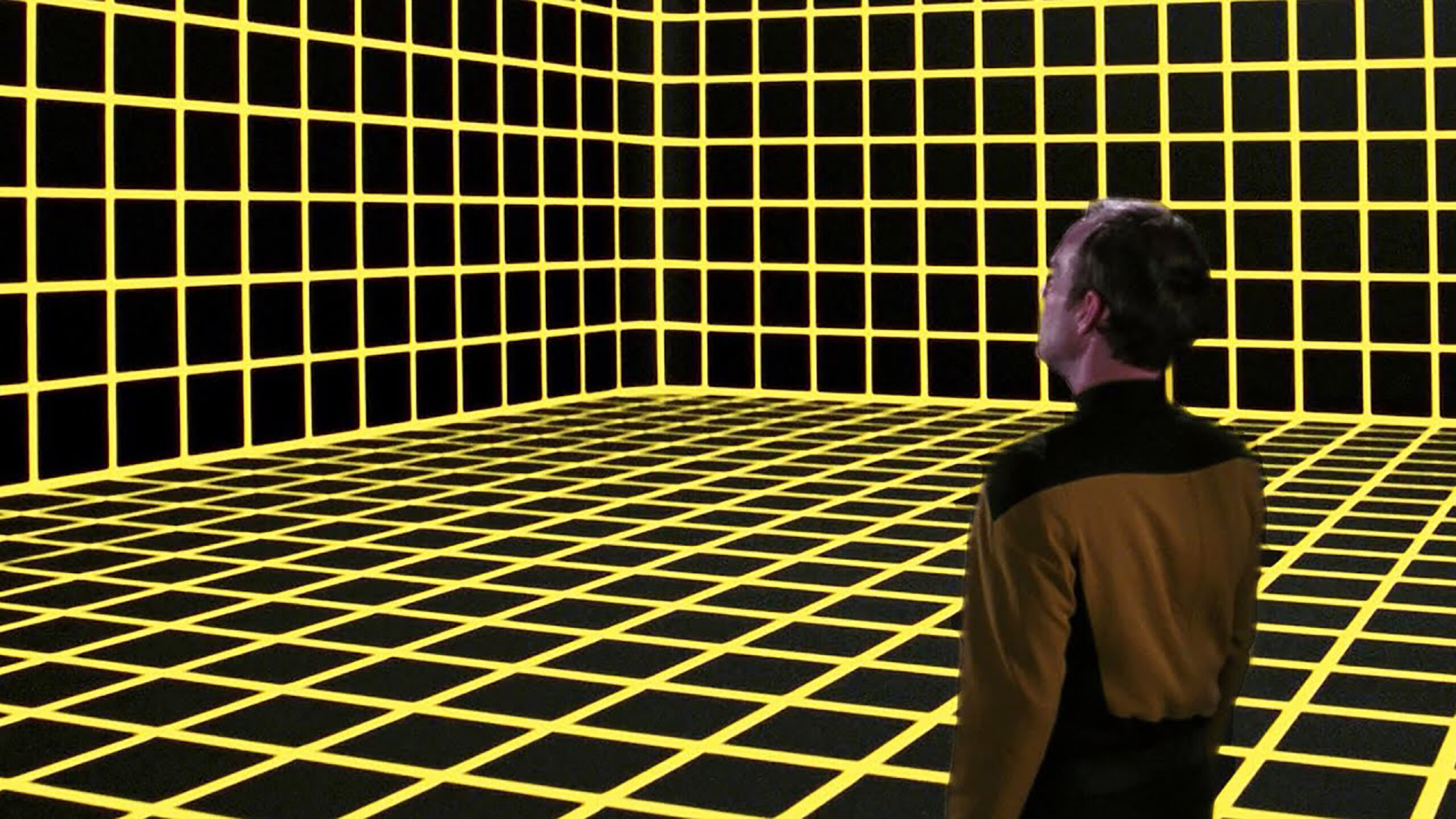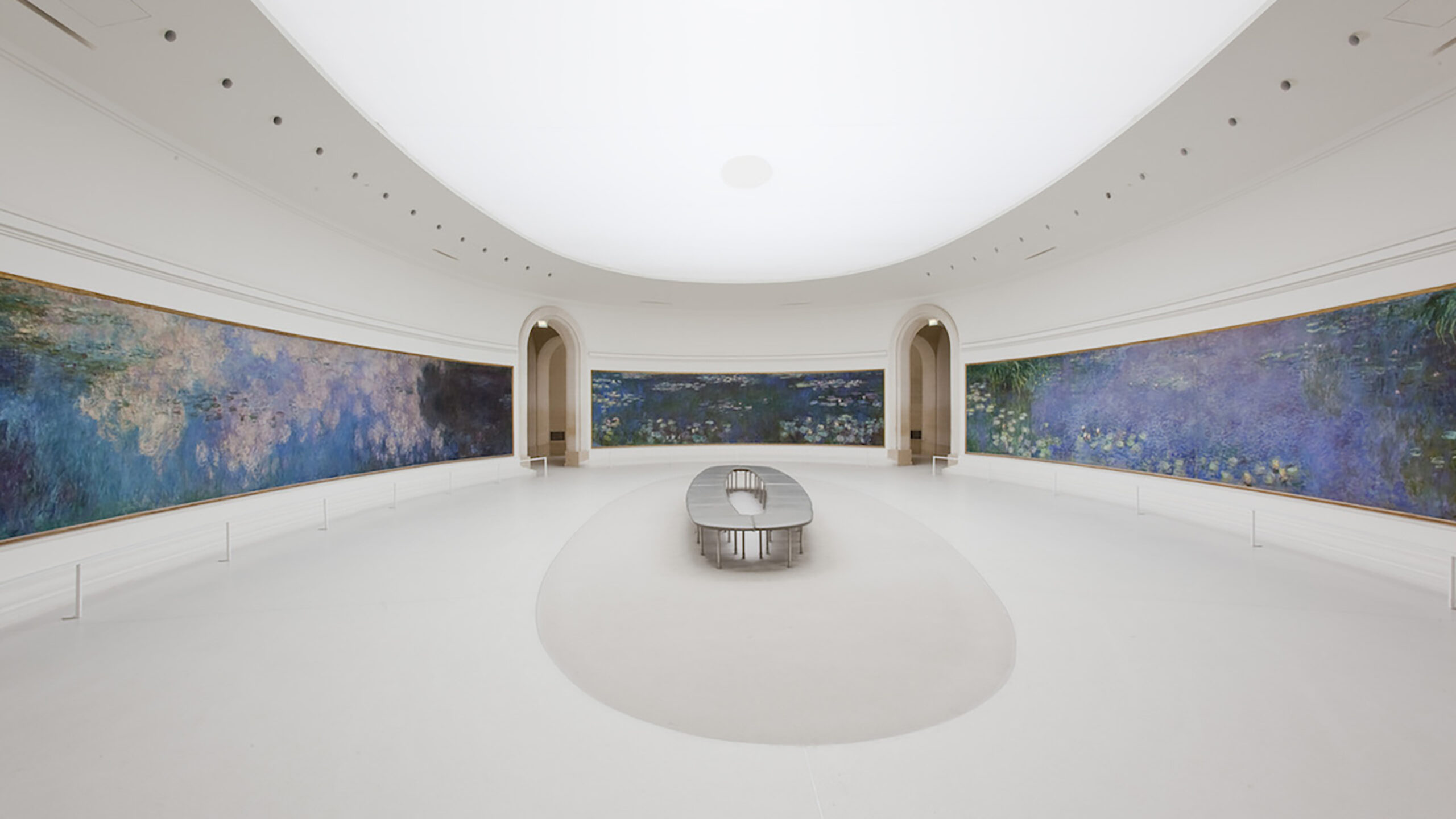IMMERSIVITY
Research and definition in an experience
Media art:
Where did the concept of immersivity originate? What questions does it answer and what issues does it raise?
In this article we broadly define the path of science and art toward immersivity and gather the efforts of a few scholars aimed at grasping the elusive meaning of this concept.
The represented gaze.
The representation of the surrounding reality has ancient origins, and from the very beginning it is confronted with the limitations of the media at its disposal. How can a three-dimensional reality be represented on a two-dimensional surface? The history of representation is long and full of different attempts and methods aimed at finding a depiction as close as possible to the human perception of the surrounding reality.
The culmination of these quests is perspective. Theorized by Euclid and first applied in painting by Leon Battista Alberti, it is the geometric-mathematical method that comes closest to human vision, capable of creating spatial illusions on a two-dimensional surface.
Following this great Renaissance achievement, the pictorial quest toward the isomorphism of vision continued.

Searching for atmosphere.
Particularly relevant to the theme of this article is the research conducted by the Impressionists. Aware of the Renaissance lesson, they identify and analyze what the Albertian perspective still lacks: atmosphere.
Claude Monet, in his research on water lilies, takes the search for atmospheric expressiveness to the extreme. He feels the need to expand the limits of the painting by using canvases of monumental proportions, the effect of which on the viewer is to feel enveloped in the atmospheric sensations of the work. At the Musée de l’Orangerie in Paris, in two large oval rooms, the huge canvases are displayed in continuity, forming one large circular painting.
Towards immersivity.
It was with the invention of photography that the tendency to seek immersivity was expressed to its greatest extent. From the beginning, larger and larger formats were experimented with, both to increase image quality, and thus realism, as well as to capture an ever-larger portion of reality. In 1901 the Lumiere brothers invented the Periphote, a camera capable of capturing a 360° image, and later the Photorama, a system of projectors capable of projecting such films onto the walls of a circular room.
With cinema, a new component is introduced: time. Narrative possibilities multiply and the quest for immersivity takes on greater force.
Early examples of what Gene Youngblood calls “expanded cinema” include Abel Gance’s Napoleon (1927). Some scenes in the film are designed to be projected on three adjacent screens thanks to a system of three synchronized projectors. From here, the experiments multiplied: starting with commercial film formats such as cinemascope, Cinerama, or the more modern IMAX, to the artistic experiments of Stand Van Der Beek with his Movie Drome (1965), a hemispherical dome on which different films and slides were projected, creating a psychedelic immersive effect.
The advent of digital – the development of techniques and technologies such as videomapping or VR headsets – have opened the door to solutions that can achieve increasingly powerful immersive effects.

How to define immersivity?
Represented reality has always suffered from media limitations. We have seen how the desire of many artists has been to overcome these limits by attempting to blur the boundaries between reality and representation. What has been described so far shows the long path that led to the emergence of immersive experiences and the definition of immersivity.
To define the concept of immersivity, an initial distinction must be made between mental and physical immersivity. Mental immersivity is the sensation in which the user feels deeply involved within the proposed fiction to the point of detachment from the perception of where he or she is physically located. This occurs, for example, through the reading of a particularly exciting book.
Physical immersion, on the other hand, exploits visual and spatial media to engage the user’s senses.
Defining immersivity is no simple matter. The first definition can be traced back to the book Hamlet on the Holodeck, a visionary volume written in 1997 by Janet Murray, a researcher at MIT (Massachusetts Institute of Technology) investigating the possibilities of storytelling within what was then called cyberspace.
With this definition Murray set the basic pillars of immersion. She defines the term “immersion” by comparing it to the psychophysical sensation of being immersed in water. In such a situation there is complete sensory involvement; one is inside a reality different from the usual environmental context, and all of our senses communicate this. Finally, it treats it as an experience, thus involving the temporal and subjective dimensions; immersivity does not exist in itself, but only in relation to the subject experiencing it.

This definition is indeed very broad and capable of containing many different groundings. Scholars after Murray have delved into the concept, but without arriving at an ontological definition of immersivity.
Immersivity in fact is not a technique, is not tied to any media, and therefore is not subject to precise rules that define its technical, aesthetic, and narrative limits.
A particularly interesting refinement of the definition of immersivity is brought about by the introduction of the concept of presence:
The International Society of Telepresence’s definition posits immersivity as the ability of a virtual environment (not strictly understood as virtual reality) to convince the user that the sensations from that environment are the predominant ones and that, therefore, the place the user physically inhabits is the virtual one. This is possible when the perceptual illusion of an unmediated environment is activated, i.e. when the user does not perceive that the environment he or she is in is artificially constructed.
A very practical definition of what an immersive experience is and how it is created can be found in The Matrix. When Neo enters “the Matrix” he appears confused and asks Morpheus if such a situation is real. Morpheus replies:

Creating an immersive installation therefore means harnessing the senses of the visitor (user or viewer) to make him or her feel like they are inside another space. Doing so skillfully can lead to perceptually impressive results, trigger emotional reactions, and imprint the experience in memory.
Giulia Lazzaretto
Creative Designer at DrawLight_MeYoung
Bibliography
Franco Ghione, La prospettiva scientifica, in «Lebenswelt» 11, 2017, pp. 61-89
Institut Lumière, Le Photorama Lumière,
https://www.institut-lumiere.org/musee/les-freres-lumiere-et-leurs-inventions/photoramas.html
Gene Youngblood, Expanded Cinema, trad. it. (Expanded Cinema, Boston, E.P. Dutton, 1970), Bologna, Clueb, 2013
Janet Murray, Hamlet on the Holodeck, New York, The Free Press, 1997
International Society for Presence Research, The Concept of Presence: Explication Statement, 2008
http://ispr.info/
Filmography
Abel Gance, regista, Napoleon, Francia, Consortium Westi (Ciné-France-Films), 1927
Lana e Lilly Wachowski, registi, The Matrix, Warner Bros, 1999
scena: https://youtu.be/VVro5wxqh4U


